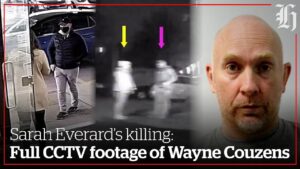A recent client is a globally renowned CEO of a major brand. He was subjected to a campaign of abuse, threats and intimidation by an extremely hostile person who had decided that our client was responsibility for something he wasn’t.
The initial interaction with the ‘person of concern’ failed to convince him that he was targeting the wrong person, and in fact caused an escalation in the level of disturbing communications.
The client was understandable concerned for his personal safety and that of his family. He expressed real concern that the person of concern who indicated that he knew where our client lived, would attack him or his family when they were out shopping or going about their normal personal business.
A deep dive into our client’s and his family’s digital footprint, a service we call our ‘Vulnerability Assessment’ identified a significant volume of personal and private information that was easily and publicly available, even though our client had no social media footprint and believed that he was a very private person. The information available included plans of his home, his personal phone number, and several other details useful to the person of concern.
So, why was this assessment critical to us safeguarding him and his family and why were the client’s concerns that they might be attacked in public unwarranted?
When looking at the issue from a Behavioural Threat Assessment perspective, we are looking at the behaviour of a person of concern who is targeting another with whom they either have a personal grievance towards or who they believe represents an organisation or entity with whom they have a grievance with.
This is the reason that Politicians are usually attacked in the UK. The attacks of UK MPs, apart from the attack on Lord Jones, have all been motivated by a cause or ideology in which the person of concern is fixated on, and hold the MP responsible as a representative on the political establishment. The pattern of attacks on UK MPs is that the MP is targeted not because of their personal believes per se, but because a local constituent is a person with a grievance and has access to their local MP. It is why all MPs are at equal risk of attack and why none who have been a victim, or an attack would ever have appeared on any high-risk list.
Persons of concern with a grievance don’t just ‘snap’ and attack at random. They are not emotive and do not carry out an ‘affected’ violence. They are predators who ‘hunt’ their targets and when they strike, they do so free from emotion having followed a planned and purposeful process, thought out in advance in order to achieve their goal.
In Mark Follman’s excellent recent book titled ‘Trigger Points’ (Follman, 2022) he references a presentation by Dr Reid Meloy, one of the world’s experts on the subject and a personal mentor, in which he uses the image of a pet kitten recoiling, teeth and claws bared, hissing, and compared that with an image of a mountain lion hunting its prey, calm, calculated and lethal.
That visual representation brilliantly articulates the difference between Affected and Impulsive violence and Predatory and Targeted Attacks.
The person whose behaviour is considered as worrisome, disruptive, and concerning is unlikely to randomly attack you in the supermarket. They are more likely to be the predator, who will conduct extensive research on the internet, seeking out your vulnerabilities and identifying predictable behaviour or trends to enable them to attack. They are the cold-blooded killer we see in the movies and in our nightmares.
The idea that they might bump into you in the supermarket and attack is unlikely. Why?
Well because to begin with, to conduct proper surveillance covertly and by yourself, without been noticed or leaving a ‘ripple’ in your wake is extremely difficult. The likelihood of being seen and reported as a potential criminal is a chance they are unlikely to take. They plan, they prepare, they research, they probe for vulnerabilities and weaknesses in security and when then are ready, only then do they strike!
This predatory behaviour is the reason that a person of concern rarely if ever communicates a threat to their intended target. Dr. Read Meloy in his recent interview on The Online Bodyguard® podcast (https://podcasts.apple.com/gb/podcast/the-online-bodyguard-podcast-threat-assessment/id1602710265?i=1000553251104) explained that statistically there is a less than 5% chance of a direct threat being made. This is explained brilliantly by Calhoun and Weston with their Hunters & Howlers concept detailed in their book titled ‘Threat Assessment and Management Strategies: Identifying the Howlers and Hunters’. (Calhoun & Weston Second, 2017) When considered logically, why would someone go to the effort of planning and preparing, researching, and equipping themselves, only to then to communicate their intentions to their target?
It is because these persons of concern plan and prepare their attacks and follow a process widely accepted as the ‘Pathway to Violence’ that Behavioural Threat specialists such as Defuse® can identify, assess, intervene, and prevent such attacks. It is also why we are able identify such plans and distinguish them from those whose sole intent is to cause fear, intimidate and threaten, or as Calhoun and Weston describes them, the Howlers!
This ability to identify the Hunter from the Howler is critical. Failure to do so often causes assets such as personal security together with significant cost to be used unnecessarily. A bi product of that is the increased anxiety that that creates in the person targeted, often seen as paranoia and hypervigilance. A further concern is that by following ‘the noise’ rather than the science you are at risk of missing a genuine threat.
For further information please contact Defuse® at [email protected]
Calhoun, F. S., & WestonSecond, S. W. (2017). Threat assessment and management strategies: Identifying the howlers and hunters, second edition. In Threat Assessment and Management Strategies: Identifying the Howlers and Hunters, Second Edition. https://doi.org/10.1201/b19689
Follman, mark. (2022). Trigger Points: inside the mission to stop mass shootings in America (1st ed.). Dey St.



